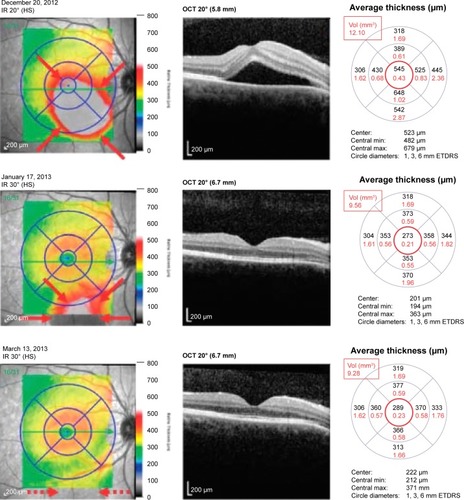Figures & data
Table 1 Summary of patient demographics and history
Table 2 Visual and anatomical outcome measures of the study eyeTable Footnotea
Figure 1 Patient with CSCR, treated with eplerenone 50 mg twice-daily.
Abbreviations: Vol, volume; min, minimum; max, maximum; ETDRS, Early Treatment Diabetic Retinopathy Study; IR, infrared radiation; OCT, optical coherence tomography; HS, high-sensitivity; CSCR, central serous chorioretinopathy; CMT, central macular thickness; MV, macular volume; SRF, subretinal fluid.

Figure 2 Patient with CSCR, treated with eplerenone 25 mg twice-daily from January to March 2013.
Abbreviations: Vol, volume; min, minimum; max, maximum; ETDRS, Early Treatment Diabetic Retinopathy Study; IR, infrared radiation; OCT, optical coherence tomography; HS, high-sensitivity; CSCR, central serous chorioretinopathy; CMT, central macular thickness; MV, macular volume.

Table 3 Decrease (Δ, initial – final) in CMT and MV for all patients treated with oral mineralocorticoid antagonists, sorted primarily by CMT, and secondarily by MV
Table 4 Tolerable and intolerable side effects of mineralocorticoid antagonists in our cohort
